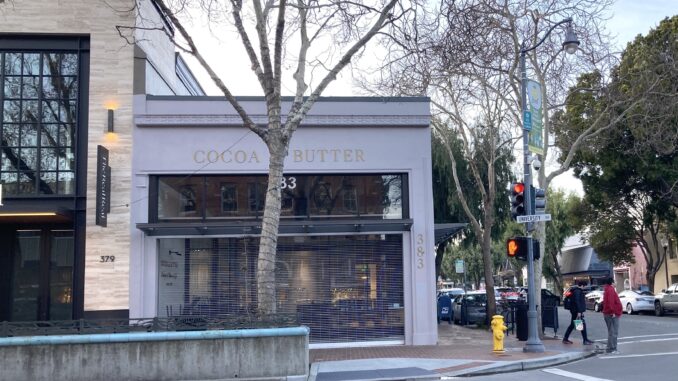
BY BRADEN CARTWRIGHT
Daily Post Staff Writer
Vacancies in downtown Palo Alto are the highest they’ve been in more than 25 years — a span that’s included the dot-com bubble burst and the Great Recession, according to data from a consultant and the city.
Downtown vacancies in the first quarter of this year are at 15%, according to a report from consultant Michael Baker International.
Online shopping and the city’s retail preservation rules are to blame, Michael Baker said in the report.
From 2014 to 2020, the downtown vacancy rate stayed between 0% and 6%, Michael Baker said.
About a year into the pandemic, the downtown vacancy rate jumped to 9% and never recovered. The vacancy rate reached 14% for the first time last spring, the report found.
Looking back further, vacancy rates peaked at 13.5% in 2003 and at 9.5% in 2009, according to a report from City Manager Ed Shikada in March 2021.
The current asking price per square foot is between $75 and $80 for downtown retail space, and it’s been in that range since 2020, Michael Baker said in its report.
Downtown spaces stay vacant for an average of eight-and-a-half months, the report found.
Landlords get some value from keeping their options open, economist Erica Moszkowski said in a Harvard study published on Nov. 16.
“Different tenants may have different willingness to pay for the same space, creating an incentive for landlords to wait for a particularly high rent offer,” Moszkowski wrote.
Moszkowski’s study and Michael Baker’s report were sent to the city’s Planning and Transportation Commission, which discussed retail recovery last night.
Council has also created a “Retail Committee” that will meet for the first time on March 20 to talk about vacancies and street design.
Council members Greer Stone, Ed Lauing and Lydia Kou are on the Retail Committee.
Commissioners criticized Dan Wery and Surabhi Barbhaya from Michael Baker for only interviewing seven individuals from Palo Alto.
Wery and Barbhaya said they talked to three business owners, three downtown landlords and the Chamber of Commerce president to inform their report.
Wery and Barbhaya said more interviews weren’t in their contract, but commissioners were worried that they didn’t understand Palo Alto.
“We need to be confident of that so that we know — when you’re making recommendations on what changes we might want to consider — you get the baseline,” Commissioner Bart Hechtman said.
The city hired Michael Baker and a second consultant, called Streetsense, to improve the economic conditions in the city.
Larisa Ortiz from Streetsense, has recommended allowing more types of businesses, such as nail salons, tutoring centers and gyms.
Michael Baker also brought up the city’s retail preservation ordinance, passed in 2015 to limit first-floor storefronts from being converted into offices.
Palo Alto has too much retail space at 461,000 square feet, Michael Baker said.
The loss of office workers has reduced demand by 111,000 square feet.
Smaller, neighborhood-serving shopping centers are seeing steady and low vacancy rates, Michael Baker said.
Competition from the Stanford Shopping Center and big box retailers in Mountain View are also factors, the report said.



Maybe rent is just too high! The three landlords that split most of the downtown real estate have very low basis so it’s nothing to them to keep the rent high and vacancies open.
To help our struggling downtown retailers, we should build more homes near downtown. People who live nearby by will be steady customers.